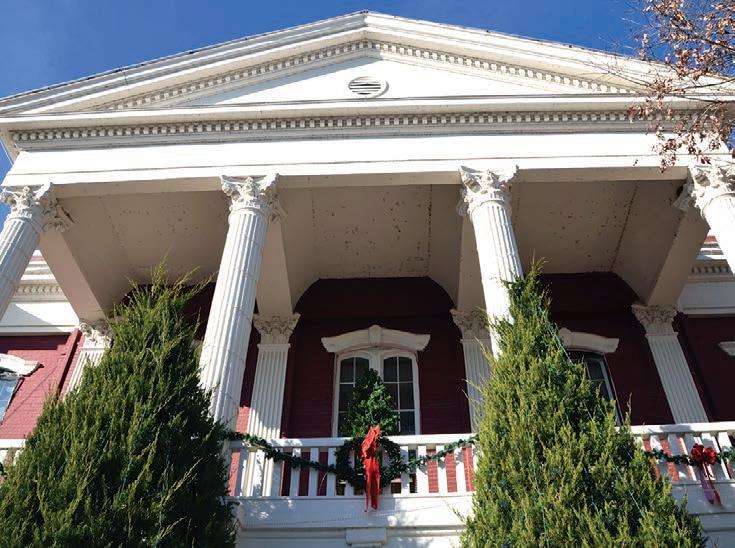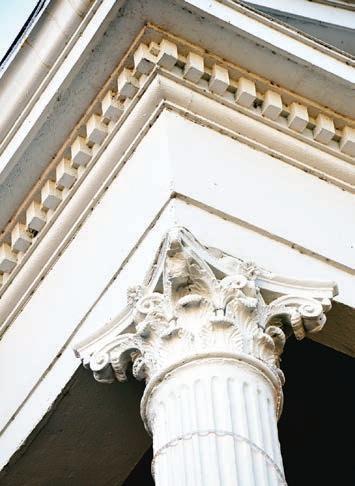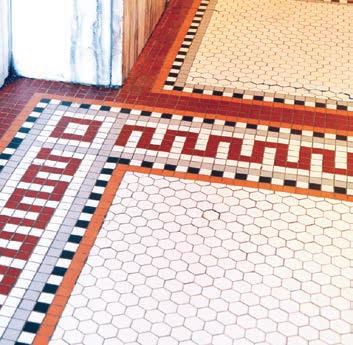
7 minute read
Smart911 success stories
Smart911 continues to provide valuable details to first responders
By JESSICA ROSE Community Marketing Manager, Smart911
In 2012 Arkansas became the first state in the country to implement Smart911 statewide to improve emergency response for all Arkansans. Smart911 is a national safety service that allows residents to create for their household a Safety Profile that contains any information they want 9-1-1 and first responders to know in the event of an emergency. When the resident dials 9-1-1, his profile is immediately available to the dispatcher providing valuable details to facilitate a fast and effective response.
Since statewide implementation, a Smart911 Safety Profile has appeared with more than 38,000 9-1-1 calls in Arkansas, providing additional information to enhance the emergency response process. Incidents within the state of Arkansas where a Smart911 profile has been utilized include: • In Pulaski County, a frantic mother dialed 9-1-1 when her daughter went missing after school one day. Because she had included her daughter’s photo, age and description in her Safety Profile, the 9-1-1 dispatcher was able to immediately ask what the girl was wearing that day. The girl was found safe. • A boy in Fort Smith fell in his yard, cutting his face on the barbeque grill. In a panic, his mother dialed 9-1-1 but forgot to mention his allergy to latex. However, this detail was listed in the family’s Safety Profile and was passed on to first responders as they were en route to the scene.
• An elderly man in Jonesboro slipped and fell at home. He had multiple ailments and was unable to effectively communicate, but his Safety Profile provided his home address as well as his medical details. First responders were able to begin administering treatment quickly upon arriving at the scene. Smart911 recently was featured on Good Morning America after helping to save a man’s life in Michigan. When Dan Hoffman awoke from a nap to find his home on fire, he dialed 9-1-1 but was unable to speak through the smoke. His Safety Profile provided dispatchers with his home address. This cut 11 minutes off the response time and saved Hoffman’s life. Today Hoffman is thankful he is alive to hug his two daughters and is Since statewide implementation, a Smart911 Safety Profile has appeared with more than 38,000 9-1encouraging everyone to take a few minutes to prepare for an emergency. Organizations 1 calls in Arkansas, providing additional information to across Arkansas, including 9-1-1 enhance the emergency response process. emergency centers, police, fire and emergency medical services continue to work to spread the word about Smart911 and encourage residents to sign up for the service. Their efforts reach more and more residents each day, but additional support is helpful. Any community groups, government agencies, public officials or residents who are able to help spread the word can e-mail Arkansas@smart911.com for more information. To sign up for the free service, visit www.smart911.com. In addition to providing valuable details for 9-1-1 responders, residents also can also opt to answer questions to assist emergency management to prepare for and respond to disasters. These details can include anyone in their home who needs assistance evacuating, whether they have a 72-hour supply of food and water or information about resources they have to assist with a response to a disaster.
www.arcounties.org
Photos by Holly Hope/Arkansas Historic Preservation Program

A Stately Lady
Grant program has preserved historic features of White County Courthouse
By Mark Christ Arkansas Historic Preservation Program
The stately White County Courthouse in Searcy stands today as one of the finest examples of a Classical Revival-style public building in Arkansas. The Arkansas Historic Preservation Program and White County have worked together for nearly 25 years to preserve the building and make it accessible to all of the county’s constituents. Since 1991, White County has received $293,204 through the AHPP’s County Courthouse Restoration Grant program for restoration work on the landmark building, in addition to another grant to prepare the old Searcy Post Office to serve as a courthouse annex (see sidebar).
When Arkansas’s territorial General Assembly created White County on Oct. 23, 1835, it decreed that “until the seat of justice shall be located, the temporary seat shall be and the courts shall be held at the home of David Crise near the White Sulphur Springs,” now the site of Oak Grove Cemetery. A fiveman commission was established to select a permanent county seat, and in 1839 Crawford Walker donated 10 acres of land to them, which was sold to finance a one-story log building just southwest of the current courthouse. White County’s first permanent courthouse, with its furnishings, cost only $138.50. Interestingly, the original donation became embroiled in a kerfuffle involving land grants to veterans of the War of 1812 that eventually went to the U.S. Supreme Court, making White County’s courthouse the only one in Arkansas whose location was adjudicated by the nation’s highest court.
By 1850, the county needed a larger courthouse and a two-story, wood-frame building featuring a pair of single-story adjacent wings was built for $1,000 on the site of the present courthouse. As White County continued to grow during that decade, government operations soon outgrew the 1850 structure and plans were made for a newer, larger courthouse to be constructed in 1861. The Civil War, however, curtailed those plans and it was not until

Opposite Page: The White County Courthouse in Searcy is one of the finest examples of a Classical Revival-style public building in Arkansas. The two-story mansion, designed by H.L. Baldwin of Memphis, is faced with cut stone on the first floor and brick on the second floor. Top Left: The original building was constructed in 1871, then expanded in 1912. The exterior, which was repainted in 2009 with money from the Arkansas Historic Preservation’s County Courthouse Restoration Grant Program, features include soaring columns.
Top Right: Each of the building’s columns is topped with a Corinthian capital.
Bottom Right: The courthouse’s interior is equally as handsome, with marble wainscoting and ornate hexagonal-tile floors.


1869 that new construction was to commence. In the intervening years, unfortunately, the 1850 building had been sold, moved and reopened as the Burrow Hotel. White County’s leaders would have to lease space from the local Masonic Lodge at $450 per year until a new building could be erected.
H.L. Baldwin of Memphis was retained as architect to design what became a two-story masonry building faced with cut stone on the first floor and brick on the second, topped by a clock tower with a bell dated 1855. While the county accepted a low bid of $25,000 from Searcy builder Wyatt Sanford to construct the building, it proved far more expensive by the time it opened in 1871. Still, the building sufficed for 40 years, with county offices on the first floor and courtrooms on the second.
By 1912, White County had again outgrown its courthouse and employed architect Frank W. Gibb – whose designs are reflected in a number of historic Arkansas courthouses – to remodel the building and add space. Gibb stayed true to the design of the 1871 building, continuing the motif of cut stone on the first floor and brick on the second story. He added wings to the north and south elevations of the building, flattened the original’s hipped roof, and removed gables from the building. The White County Courthouse was listed on the National Register of Historic Places on August 3, 1977.
Today, the White County Courthouse remains a handsome building, with its soaring columns and Corinthian capitals, marble wainscoting and ornate hexagonal-tile floors. Its grounds are enhanced by memorials to White County soldiers who have served from the Civil War to present day and an Arkansas Champion deodar cedar tree planted by County Judge Herbert Moody in 1939. In addition to county business, the courthouse grounds are home to a farmer’s market during the growing season. The White County Courthouse remains an integral part of its community, and the Arkansas Historic Preservation Program will continue to work with county officials to see that it stays that way.
Applications are now being accepted for the Arkansas Historic Preservation Program’s County Courthouse Restoration Grant program. The grants are financed through Real Estate Transfer Tax funds distributed by the Arkansas Natural and Cultural Resources Council for rehabilitation of historic county courthouses across Arkansas. Applications for County Courthouse Restoration Grants will be due in the AHPP office at 323 Center Street, Suite 1500, in Little Rock no later than 4:30 p.m. on Friday, March 6. Applications can be found at http://www.arkansaspreservation.com/preservation-services/grant-programs/. For more information, call AHPP Grants Coordinator Joia Burton at (501) 324-9883 [TDD 501324-9811] or send her an e-mail at joia@arkansasheritage.org.



